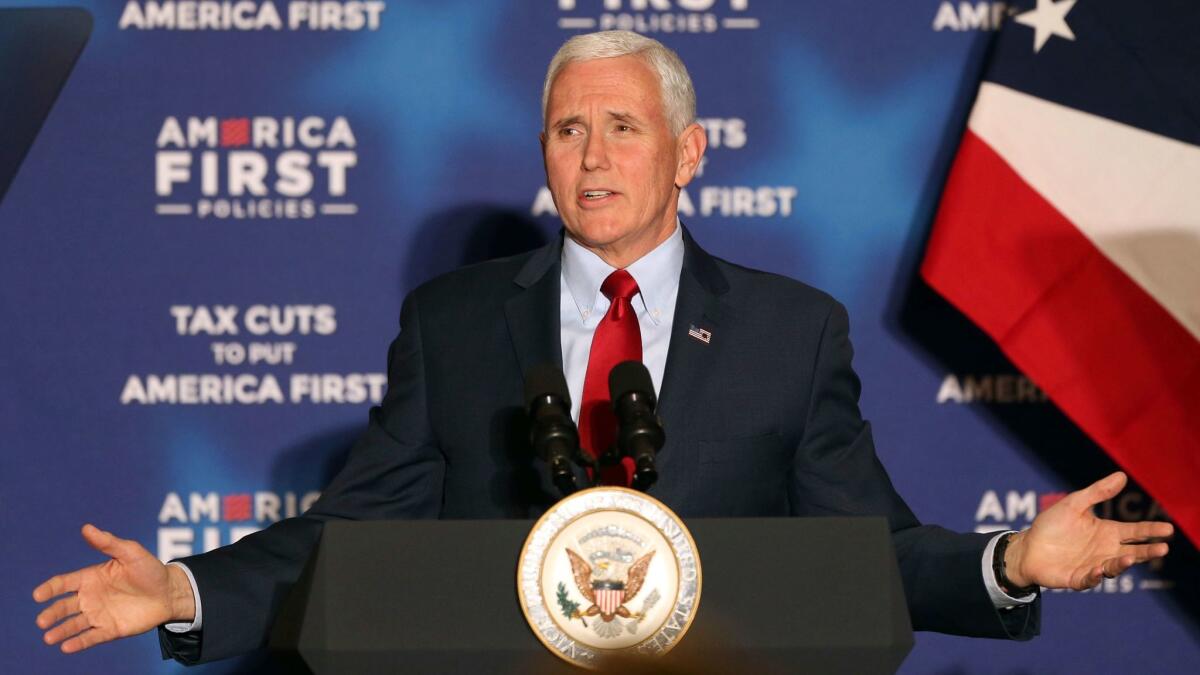Column: Bowing to Koch brothers, House passes egregious ‘right to try’ bill

- Share via
Just one week after failing at a legislative maneuver, the House late Wednesday passed a right-to-try bill that ostensibly offers terminally ill patients hope from experimental treatments, but in fact undermines drug-safety protections for everyone. The vote was 267-149, with 35 Democrats in favor and two Republicans against. That means that three more Democrats voted for the bill than on March 12, when an effort to fast-track the legislation with a two-thirds vote failed. Wednesday’s vote required only a simple majority. The measure now goes to the Senate, which earlier passed a broader version.
Our analysis of what’s wrong with this legislation and the agenda of the right-wing billionaires behind it, originally published last month, is below.
Few Washington practices are creepier than the exploitation of the desperately ill for ideological ends. That hasn’t stopped the sponsors of the egregious federal ‘right to try’ bill from scheduling the measure for a crucial House vote Tuesday.
The version to be voted on was formally introduced only a day before the vote. (Pro tip: If a bill is sneaked onto the legislative calendar in the dead of night, it’s probably not a good bill.) The sponsors imply that this is an improved version over the measure we wrote about in January. But experts who have examined the language, including Holly Fernandez Lynch of the University of Pennsylvania, regard the changes as modest and largely window dressing.
What hasn’t changed is the goal of the bill’s promoters, a right-wing gang that includes the Koch Brothers and the Arizona-based Goldwater Institute, to use the bill to undermine the Food and Drug Administration. Their campaign is part of their program to undercut government regulations in the name of “liberty” and “choice” — the choice to get injured and killed by doctors and drug companies chasing profits, presumably.
Are we prepared to abandon the FDA’s gatekeeping role in favor of unfettered patient autonomy and market forces?
— Holly Fernandez Lynch and Steven Joffe
If the bill passes, it would probably have to go back to the Senate to iron out differences with an earlier version that chamber passed, and then to President Trump’s desk. Since Vice President Mike Pence is a big supporter, it’s likely the bill would be signed.
That would create a public health hazard. The right-to-try bill would cut the FDA out of the approval process for drugs administered to terminal patients. Except in certain cases, it also would bar the FDA from using any adverse outcomes related to those treatments as evidence in future approval processes for the drugs. In other words, if a drug sickened or even killed a patient, that couldn’t be used in its review of whether the drug is suitable for the general public.
Fernandez Lynch and Steven Joffe, her colleague at Penn, warned in a recent article in the New England Journal of Medicine that granting patients with life-threatening illnesses a “right to try” experimental drugs without FDA oversight is a steep, slippery slope. “This logic could ultimately extend to patients with serious chronic illnesses and… to all patients who find their approved treatment options unsatisfactory.”
The consequences could reach all patients who depend on the FDA to determine the safety and efficacy of drugs. “Are we prepared to abandon the FDA’s gatekeeping role in favor of unfettered patient autonomy and market forces,” Fernandez Lynch and Joffe asked, “risking precisely the problems that prompted Congress to grant the FDA its present authority?”
The Koch network doesn’t want you to know about its ulterior motives. That’s why two of its representatives, Nathan Nascimento and David Barnes, responded to my earlier column about the bill by utterly misrepresenting the piece and neatly avoiding mentioning the goal of cutting the FDA out of the drug approval loop.
Let’s take another look at what this bill would do, along with its supposed improvements.
The measure would allow patients with irreversible terminal illnesses to try any drug that has passed its phase 1 clinical trials under FDA rules. Phase 1, however, is a very coarse screen for safety and efficacy, designed to determine whether a drug is safe enough to undergo further testing, not whether it’s safe generally.
The measure, as currently written, would cover patients who are mortally ill, have “exhausted approved treatment options” or who can’t participate in an FDA-approved clinical trial, in part because participation is “not feasible.”
Quackbuster David Gorski notes that the feasible language is “pretty vague.” He asks, “Could it mean that the patient is unwilling to be randomized or just doesn’t like the requirements of a clinical trial?” Gorski observes that another supposed safeguard for patients — that their treatment be covered by informed consent and approved by an institutional review board or IRB — is fairly toothless without FDA oversight, since there are “pretty lax IRBs for hire.”
The new version keeps in place an absolution against liability lawsuits for “manufacturers, sponsors, physicians, clinical investigators, and hospitals that participate in the existing expanded access program,” but adds that the protection doesn’t apply if there is “reckless or willful misconduct, gross negligence, or an intentional tort.” In other words, in many if not most cases, a patient who’s injured by the last-ditch treatment can’t sue the people who gave it to them.
Then there’s the restriction on the FDA’s using adverse outcomes in right-to-try cases when it judges the drug down the road. The new version has a carve-out of this provision if the Secretary of Health and Human Services determines that the information “is critical to determining the safety of the eligible investigational drug.”
That is an improvement, but it’s still on a case-by-case basis. Gorski isn’t fooled. He notes that the determination process will be burdensome enough “to discourage the FDA from using clinical outcomes in its drug approval decision-making process.”
Gorski calls the “right-to-try” campaign “a cruel sham,” and he’s right. It’s all about emasculating the FDA, which exists to protect all patients from harm, and not at all about compassion for the terminally ill. “It’s far more about dismantling the FDA and giving drug and device manufacturers more freedom to market drugs and devices with much less testing,” he writes.
We know this because one thing the right-to-try gang never explains accurately is that the FDA already has a system in place to give terminally ill patients the right to seek experimental treatments.
The bill’s promoters claim that this is still an obstacle for the patients, but that’s nonsense. The FDA approves virtually all those requests, Fernandez Lynch and Joffe report, but sometimes the agency recommends “safety-oriented” changes in the treatments based on confidential information it has but that isn’t available to the patients’ doctors. “Cutting the FDA out of the process,” they say, would deprive patients of that last measure of protection.
The FDA has made great strides in “balancing the needs of desperate patients and the principle that all patients deserve evidence that the benefits of medical products justify their risks,” they write. “We upset that balance, and diminish the FDA’s public health mission, at our peril.”
Keep up to date with Michael Hiltzik. Follow @hiltzikm on Twitter, see his Facebook page, or email michael.hiltzik@latimes.com.
Return to Michael Hiltzik’s blog.
UPDATES:
6:11 p.m., March 13: This post has been updated with the defeat of the bill on the House floor.
More to Read
Sign up for Essential California
The most important California stories and recommendations in your inbox every morning.
You may occasionally receive promotional content from the Los Angeles Times.











